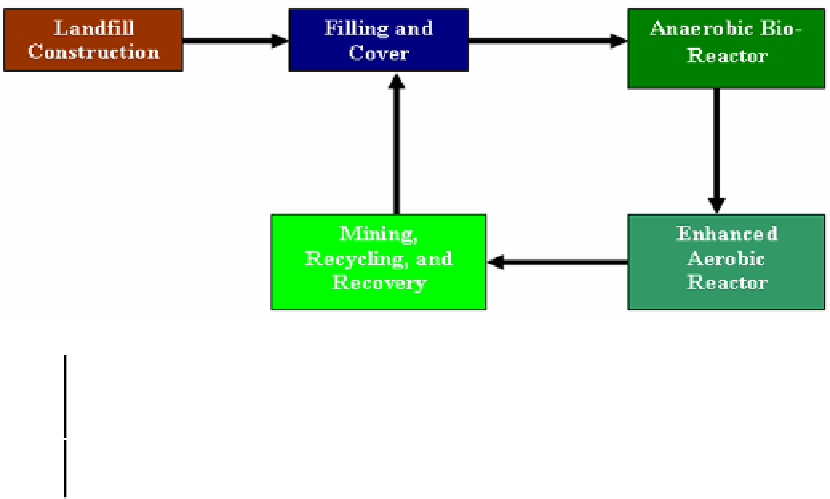Environmental Engineering Reference
In-Depth Information
construction phase of the biocell. The field data during construction stage was presented in
Hunte et al, 2007. According to Hunte et al. (2007) the settlement trend follows the waste
filling operation. In addition, based on the load cell data, Hunte et al. (2007) back calculated
the average unit weight of waste and also the compression index, two useful parameters of
settlement models and found to be consistent with values reported in literature.
C. Operation of the Calgary Biocell
The biocell operational plan is illustrated in Figure 11. The operation of each stage is
described below.
Stage of Landfill
Timeline
Stage I: Anaerobic Bio-Reactor
5 to 7 years
Stage II: Enhanced Aerobic Reactor
1 to 2 years
Stage III: Mining, Recycling, and Recovery
½ to 1 year
Total Expected Life Span of the Biocell
6 to 12 years
Figure 11. Operational Plan of the Calgary Biocell
1. Biocell stage 1: Anaerobic decomposition with gas extraction
In a waste cell, the biodegradation rate and landfill gas production depends on
temperature, moisture content, nutrient and organic content in the waste. The higher the
organic content, higher will be the gas production. In a conventional dry-tomb sanitary
landfill, it may take as long as 50 to 100 years to degrade the majority of biodegradable
organics (Crawford and Smith, 1985). In the biocell, such degradation will occur within a ten
year time period.
Although the concept of bioreactor landfilling is relatively new, a number of
demonstration anaerobic bioreactors are underway in Northern America and Europe
(Hettiaratchi, 2006). Crow Wing County Landfill (CWC) located in north central Minnesota
was started in 1998 and accepted 50,000 tonnes of waste annually in an area of 5.7 hectares
(14.1 acres). Four million gallons of treated and untreated leachate were injected to waste via
















